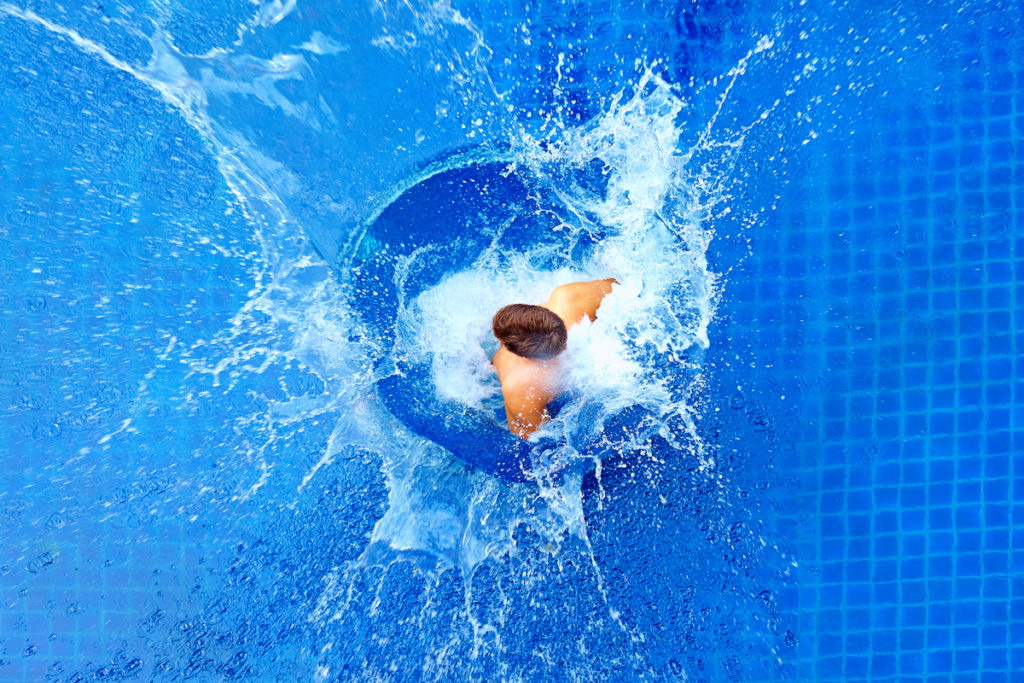Rhythmic Water Warm-Up
This dynamic approach will get your aquatic exercise participants moving, energized and ready to work.

If your current water warm-up is lacking excitement, it’s time to add some variety. An effective warm-up is light-to-moderate intensity, moves through all three planes of motion and focuses on large muscle movements. This prepares the body for higher intensity by raising the heart rate and core body temperature.
Thermoregulation is more crucial in the pool than it is on land because water has a cooling effect. Your warm-up should vary in length and intensity, depending on the temperature of the pool or the weather. Other factors to consider include the population you’re working with, the class format itself and whether or not it is appropriate to introduce new movements or combinations.
When the temperature is comfortable, consider a rhythmic warm-up with some mind-body movements. In addition to jogging, jumping jacks and cross-country skiing, include fluid and free-flowing options; cue participants to bring awareness to each movement and to tune into their bodies. Fluid movements allow more freedom and self-expression than a fully structured sequence. Encourage participants to move comfortably and find a range of motion that feels good.
Rhythmic Warm-Up
Unless otherwise noted, perform as many repetitions of the following moves as needed based on your teaching style, the water temperature and participants’ fitness level.
- Randomly walk or jog around pool, changing directions frequently.
- Perform leg curls while moving arms in figure-eight motion.
- Do jumping jacks while “rowing” with arms (shoulder rotation with forearm pronation/supination).
- Anchor standing leg and swing opposite leg while doing shoulder flexion and extension.
- Do spinal rotations from squat stance while sweeping arms side to side at pool’s surface.
- Perform cross-country ski move 3x; hold in lunge position. Swing arms front to back 4x.
- Twist in threes: single, single, double. (This is a rebounding movement—the whole body turns as arms sweep toward opposite direction.)
- From straddle stance, sweep arms in (as if hugging) and then sweep out (breaststroke), gradually increasing power.
- Do the body wave: find all “waves” in your body, large and small. Movement is random and feels good.
Repeat all or some of these moves as needed until participants are warm.
Additional Aquatic Warm-Ups
Continue to create excitement in your classes with the following warm-up ideas.
In warm weather or a warm pool environment, incorporate Ai Chi (tai chi in the water) and yoga poses. The dynamic stretches will limber up muscles and joints, and if you add arm and leg movements, you’ll generate the necessary warmth. Example: Do warrior 2 and sweep the back arm in as if using a bow and arrow. Maintain constant movement.
Start with music but with no audible cuing. Have participants visually follow your movements to a slow song or an instrumental piece. This typically works best with dynamic stretching and free-flowing movements (if the temperature is warm enough). Let participants interpret your visual cues and move comfortably. The silence will help everyone focus inward and transition from social time to exercise time. Once the song is complete, use verbal cues as usual.
Choreograph a sequence of six to eight basic moves to a song of your choosing. Movements can reflect any style of dance: Latin, disco, ballroom or a current popular song. Design a set of exercises for the verses and a sequence for the chorus. The sample dance element will grab participants’ attention early, and you can continue to develop new opening songs to keep things varied.
Start your class with strength and power. Incorporate stationary punches, hooks and upper cuts with kicks, lunges and spinal rotations to energize participants. Progress hand positioning from fists to open palms for increased resistance. Choose a high-energy song to set the mood.





